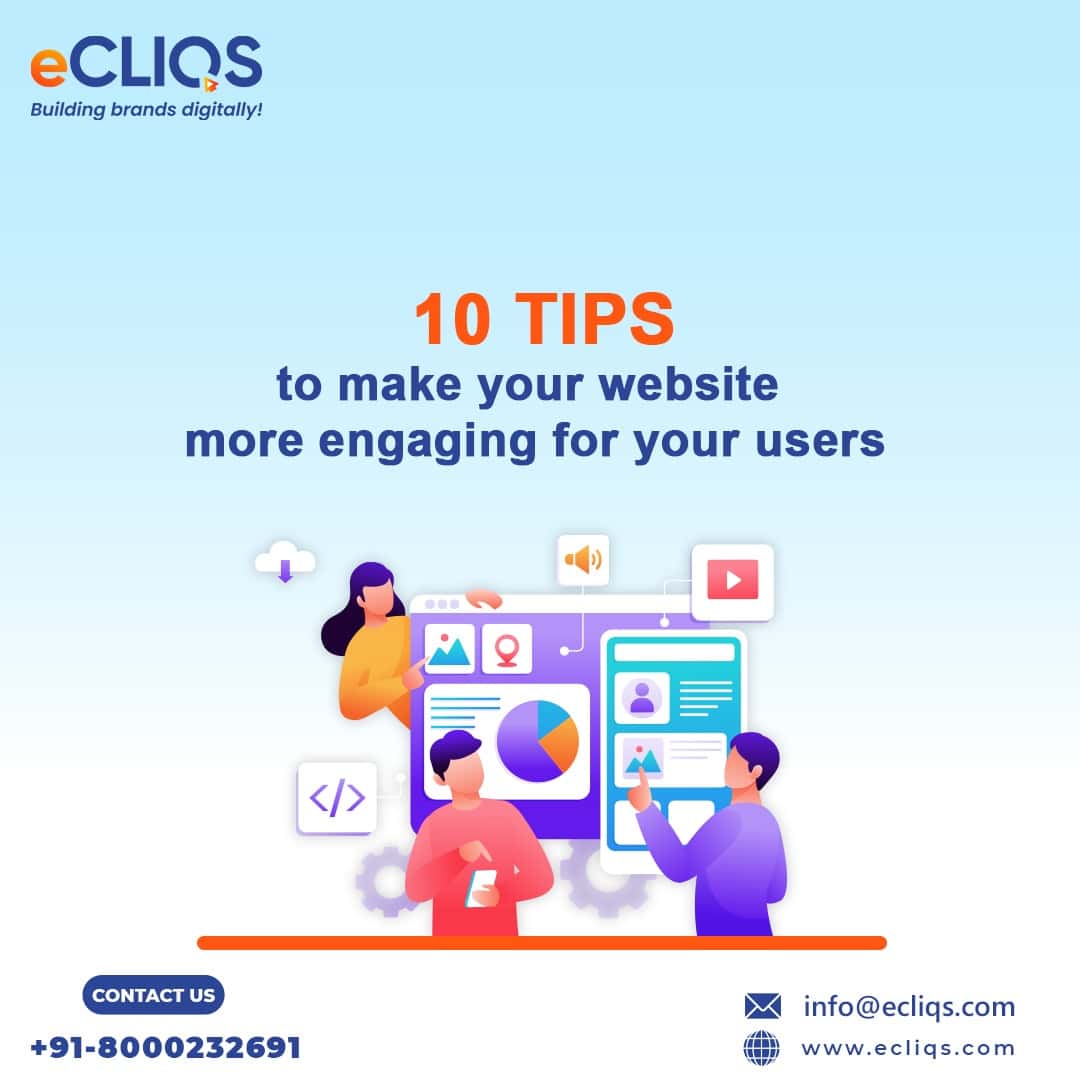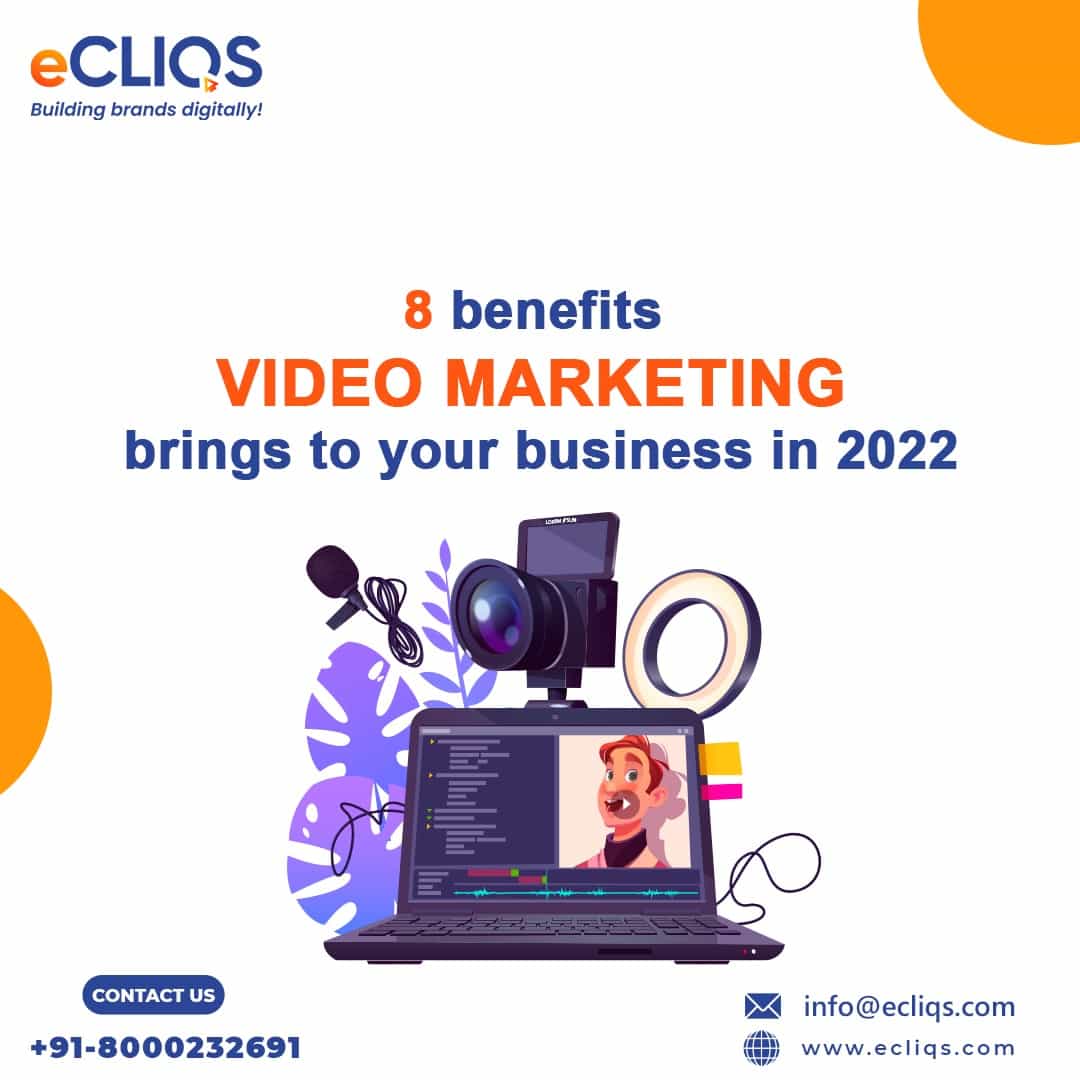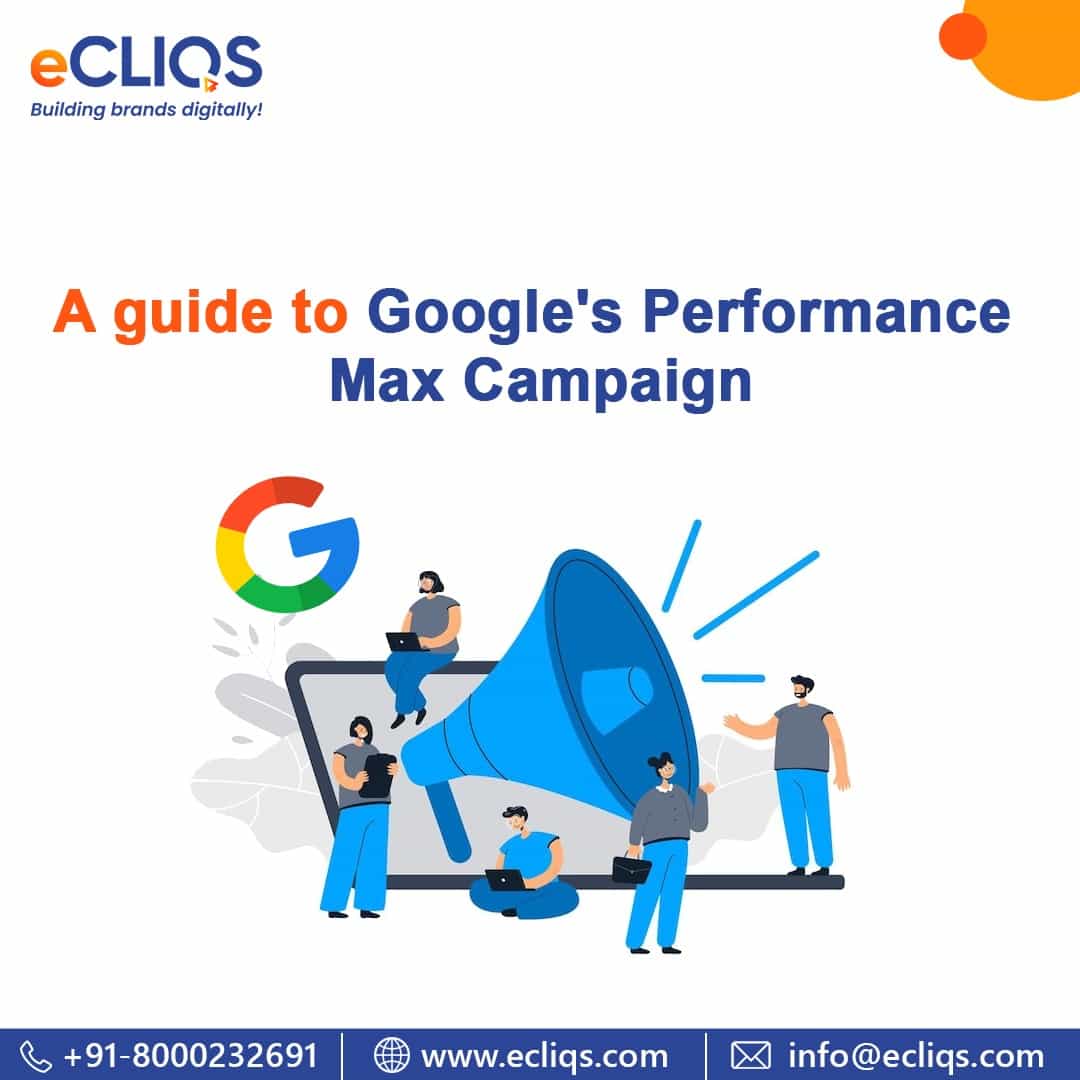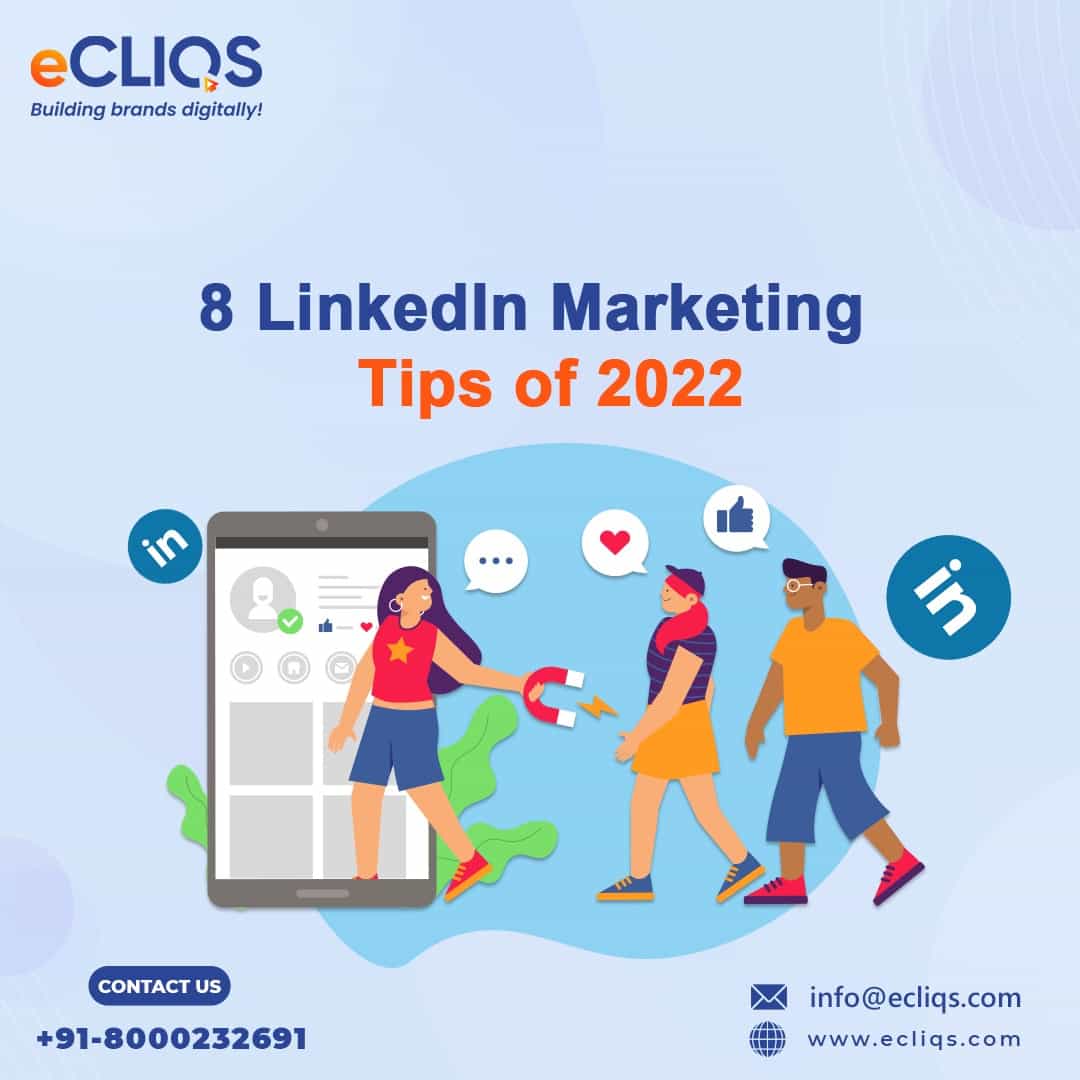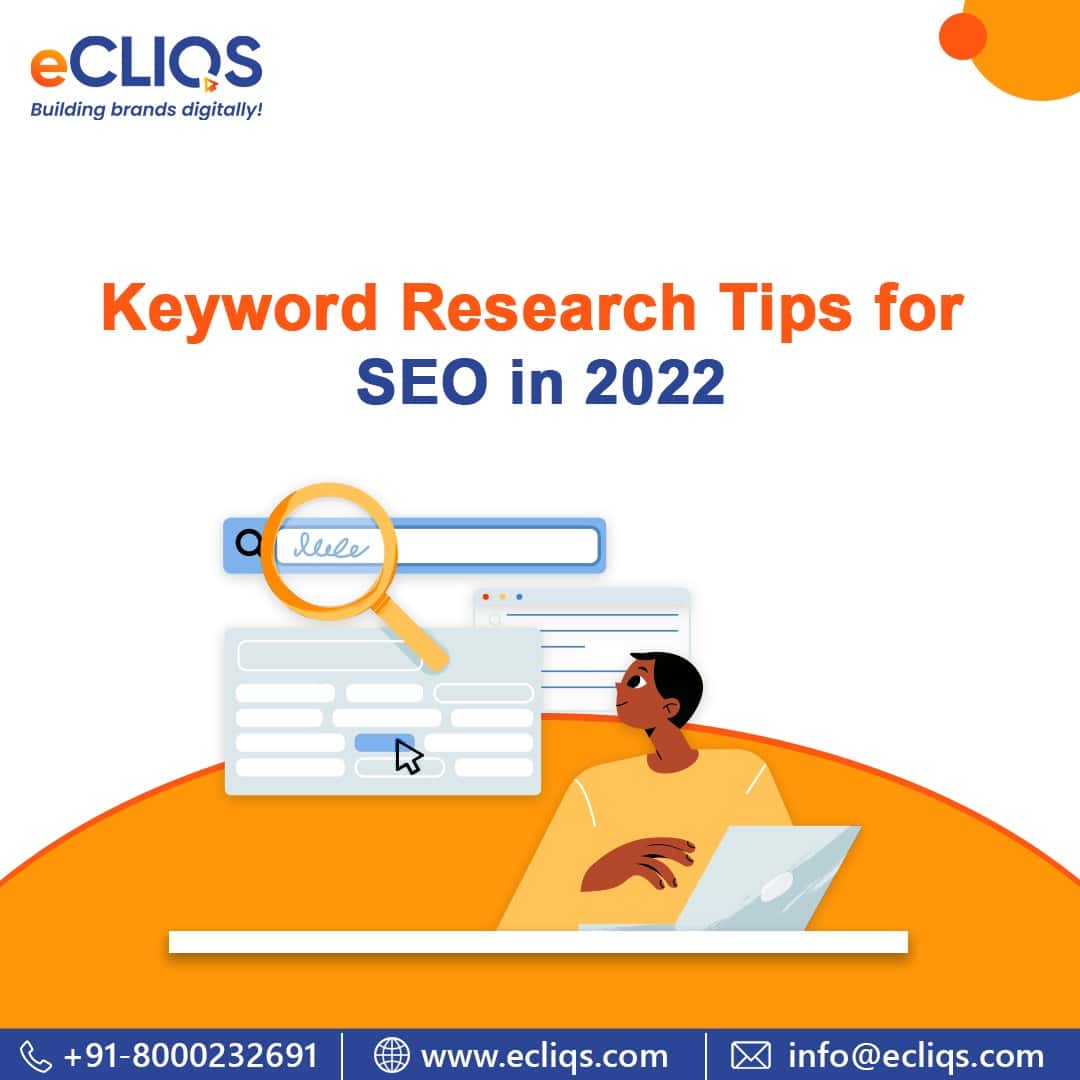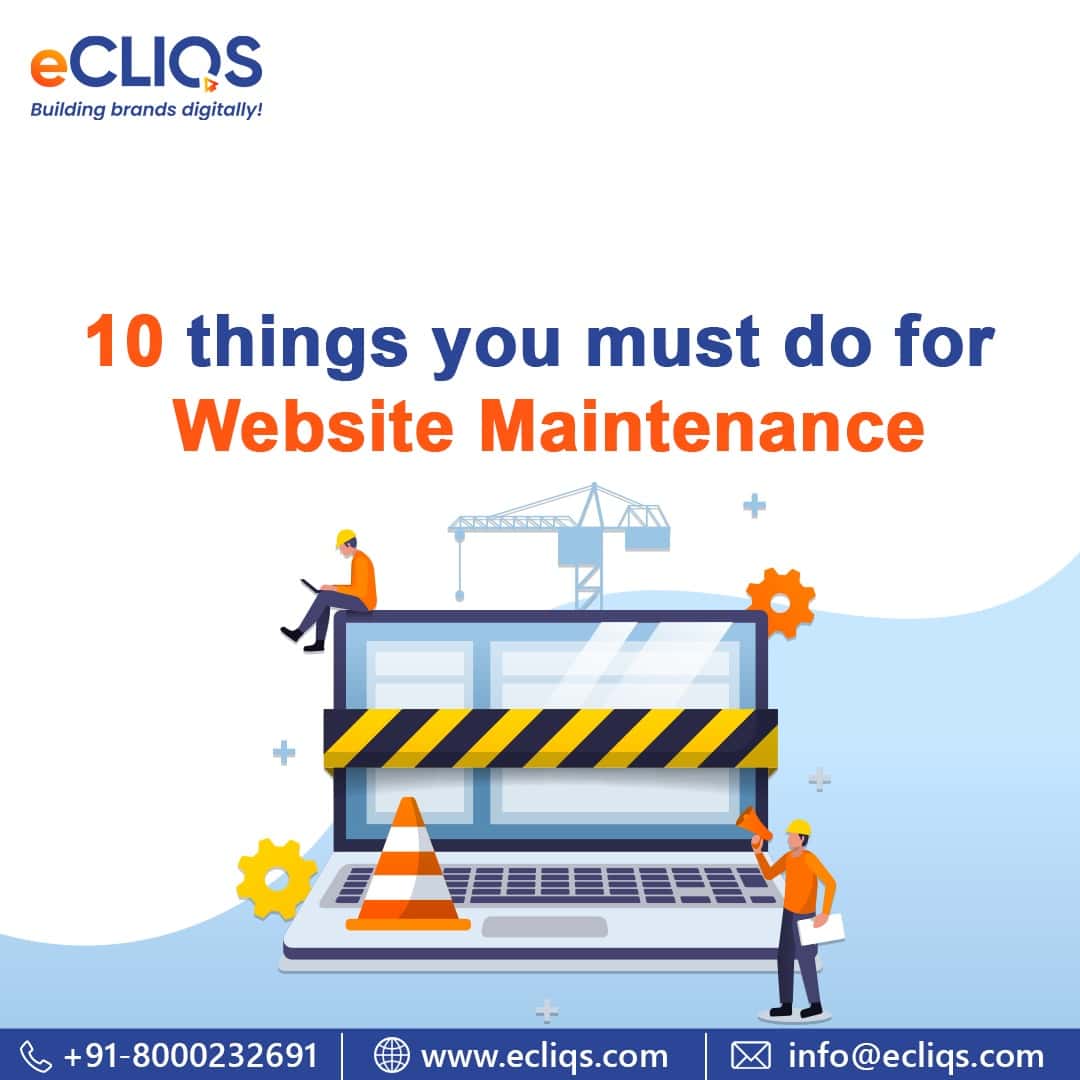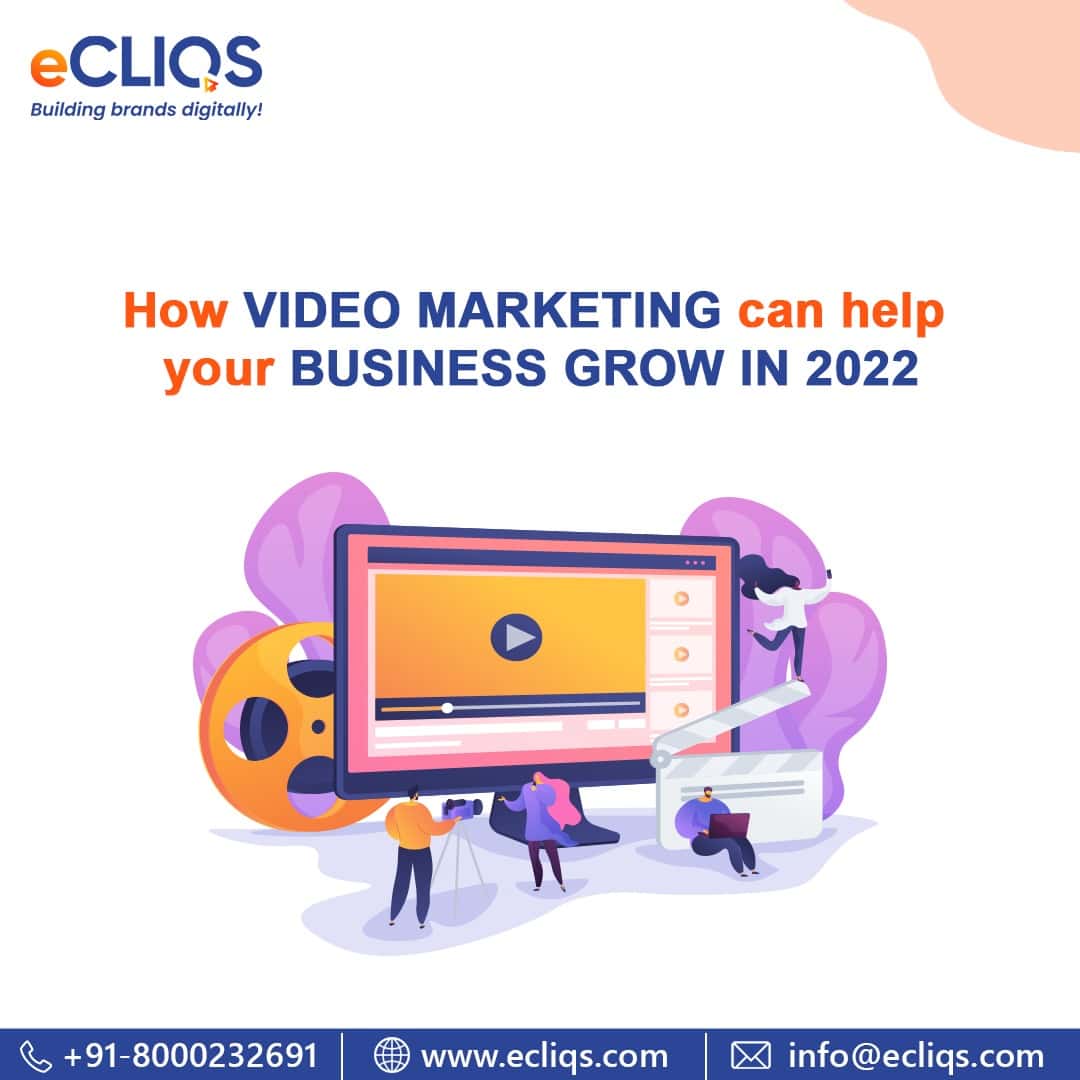10 Tips for Technical SEO
One of the cornerstones of SEO is the technical side of things. You could have the best article on the most-searched topic in your niche, but if your site hasn’t fixed its technical SEO faults, it won’t do well in the search engine results pages (SERPs).
Therefore, you need to prioritise investing in the website’s technical SEO.
In this article, we’ll define technical SEO and provide 10 practical suggestions for increasing your site’s visibility in search engines immediately.
What is Technical SEO?
Optimizations made to your site during the crawling, indexing, and rendering phases contribute to your overall technical SEO.
To put it simply, technical SEO is the process of enhancing your website’s technical characteristics in order to raise its position in search engine results pages. It’s a vast subject area that includes everything to do with search engine optimization, such as:
- Mobile optimization
- XML sitemaps
- Image SEO
- Site structure
- SSL certificates
- Internal and external links
- Site speed
- Canonical URLs
- Crawling and indexing
10 Tips for Technical SEO
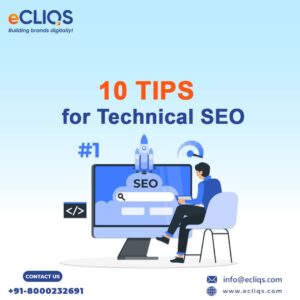
Now that you know the fundamentals of technical SEO, here are 10 strategies you can apply to improve the technical SEO of your site and move it higher in search results.
1. Make your website mobile-friendly
Let’s get started with the most fundamental technical SEO recommendation.
In 2015, one of the most significant changes Google made to its algorithm was to prioritise mobile-friendly, responsive sites. The “Mobilegeddon” algorithm update penalised numerous popular websites for failing to switch to a mobile-friendly design.
In the present day, it is crucial to have a mobile-friendly website.
So, how do you determine if your site is suitable for mobile use? The Mobile-Friendly Test on Google is a great resource. Use Google’s Mobile-Friendly Test to see if your site is up to snuff in terms of mobile optimization.
2. Optimise Your XML Sitemap
Google can’t crawl and index your site’s pages without a sitemap.
An XML sitemap can be made quickly and easily. Free WordPress plugins like Yoast and Google XML Sitemaps can help you create one.
The sitemap should then be submitted to Google through the Google Search Console.
Get started by going to Sitemaps in your Google Search Console account. You can submit a new sitemap by adding one.
Take into account these XML sitemap recommendations once you’ve submitted your sitemap for review:
- You shouldn’t include a page in your XML sitemap if you’ve explicitly forbidden it in robots.txt.
- Include only high-quality content in your sitemap.
- Dynamic XML sitemaps should be used if your site has more than 50,000 URLs.
3. Speed Up Your Website
Website loading times are crucial. Don’t get me wrong. Google will penalise your site’s rankings slightly if it loads slowly and takes too long to react.
This means that your website will not rank as highly in search engine results pages (SERPs) as it would if page load speeds were improved.
You can’t afford to disregard this technical SEO factor.
4. Performing Weekly Technical SEO Site Audits To Fix Your Site Errors
If you want to improve your search engine rankings permanently, you need to do a weekly technical SEO audit to identify and rectify any problems with your site’s on-page optimization.
5. Optimise Internal Links
A link to another page within the same website is called an internal link.
Even though internal links may not have as much of an impact on search engine results as do external connections, they are nevertheless essential for building a search engine optimised site structure and making sure search engines can easily understand your website’s information hierarchy.
6. Include Your Main Keywords in Image Alt Text
Google’s image recognition can’t read what’s there in an image. Instead, it reads the image’s metadata, which includes the file name and alt text, to figure out what it is.
Alt text is used in HTML to describe an image’s appearance and purpose.
The standard advice for alt text is to be as descriptive as possible while still making use of your primary keywords. You should also avoid overusing keywords.
7. Use Canonical URLs to Avoid Duplicate Content Issues
Getting rid of any duplicates on your site should be your top focus. Use a duplicate content scanner and removal tool like Semrush to get your site back in good standing with search engines.
However, there are occasions where it will be impossible to avoid publishing content more than once on a website. Make advantage of canonical URLs in such instances.
When copying a blog post from one domain to another, a canonical URL will come in helpful. In the case of an e-commerce site with hundreds of similar pages, they become invaluable.
8. Install an SSL Certificate for Your Website
In 2014, Google officially acknowledged that SSL certificates, often known as HTTPS encryptions, constitute a ranking indication.
Websites that haven’t yet upgraded to an SSL certificate are missing out on search engine optimization and user confidence.
9. Check and Fix Crawl Errors in Google Search Console
Crawl errors are major technical issues that can hamper your website’s performance and affect your rankings, therefore it’s important to check for them once a week in Google Search Console and repair them as soon as possible.
You should also double-check your robots.txt file to ensure that it isn’t blocking any legitimate pages by mistake.
10. Find and Fix Broken Links on Your Site
In addition to hurting your search engine rankings, broken links can also make for an unpleasant user experience.
A “404 Not Found” page is the last thing you want your readers to see. That’s a certain way to drive away a potential customer who otherwise may have become a repeat visitor.
That’s why it’s important to keep an eye out for dead links and replace them as soon as you notice them.
Conclusion
In order for search engines to successfully crawl and index your website, you need to do a series of checks and tweak various settings, which is what technical SEO entails.
The good news is that aside from performing regular SEO Audits, you won’t typically need to worry about technical SEO after you’ve gotten it right.
References
10 Tips to Make Your Website More Engaging For Your Users
It’s crucial to make a good impression on people who check out your brand. The best way to proactively inspire them in the year 2022 is through a website. So, to make a long-lasting impression on visitors, you need to make your website more interesting.
Just keep in mind that the first three or four seconds of a user’s visit can determine whether or not they will become paying customers. It stands to reason that the more interesting and straightforward your website is to navigate, the more people will look it up. Simply put, a convincing and well-built design is the driving force behind the expansion of your company.
In order to succeed, you must understand what constitutes “maximum engagement” and how to increase this crucial website factor to increase your future leads and revenue.
What is User Engagement?
Simply put, user engagement occurs when site visitors enjoy your content enough to read it, take it in, and ultimately take action.
First and foremost, you’ll notice that when user engagement is high, your audience becomes more loyal. Because your website is so effective, more people will keep coming back.
Types of User Engagement
When it comes to websites, there are many different levels of interaction. Here are some:
- Reading & Absorbing Content
User engagement occurs when a visitor to your site lands on the homepage, reads the content, and then navigates to other pages within your site.
They’re doing research on your company and products.
The more knowledgeable your customer is, the more likely they are to make a purchase from you. That’s why it’s crucial to your success that you boost website engagement.
- Visitor Comments & Discussions
Users are actively engaged when they take part in your website’s interactive content. For example completing a quiz, voting in a poll, filling out a survey, chatting with a bot, etc.
These additions are not only fun for your visitors, but they also increase engagement and encourage them to return and tell their friends.
- Social Shares
Those who enjoy reading what you have to say on your blog may decide to “like” it on Facebook and share it with their friends. Simply clicking on your site’s social sharing buttons can increase interaction.
- Watching Videos & Viewing Images
Providing a media gallery page means there will be more content for visitors to peruse. Maximize the quality of all visual-oriented content, not just the images on your homepage; fuzzy or otherwise poor-quality imagery is unacceptable.
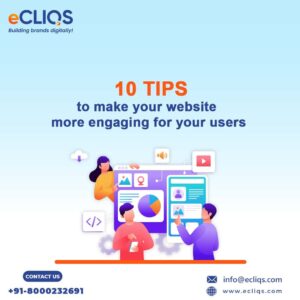
Now that you have an idea about user engagement and its types,
Here are 10 tips to make your website more engaging for the users.
1. Have a simple layout for your homepage
To make a user-friendly website, a basic layout of the homepage is a good place to begin.
Free and paid pre-built templates are available for use with website builders like WordPress
Picking and choosing elements from those designs and other sites can be the first step in crafting an interesting layout.
2. Mix up the layout
Numerous websites online use the same design for every page. Maintaining a consistent style is commendable; however, if you want your site to feel modern and inviting, consider refreshing the designs of the various folders in your navigation bar.
You may wish to have a different layout for your blog than you do for your products and services page. It will make your site visitors feel like they are exploring new content each time they visit..
3. Use white space
You shouldn’t be afraid of white space.
The notion that every blank space on a page must be filled can consume some people. Although appealing, this approach fails to deliver in terms of design effectiveness.
When a site is completely covered, it’s like walking into a crowded room. Visitors to a poorly organised website are in the same position as someone trying to clean a cluttered room: they have no idea where to begin.
White space on a website is effective because it draws the eye and guides the reader’s focus from one section to the next.
4. Choose colors strategically
There is a psychological impact of colour.
Certain associations are made between colours and the emotions they evoke. For this reason, the predominant colours of fast food establishments are red and yellow. Colors like those have been shown to stimulate appetite.
Blue is a soothing colour, which is why many online businesses and social media sites (like Facebook and Twitter) choose to use it.
Create an attractive website by carefully selecting your colour palette.
Distracting and off-putting colour combinations can discourage site visitors from exploring further. Use no more than three colours on your site, and make the third an accent.
The colours in your logo should serve as inspiration for your overall colour scheme. Make sure the colours on your website match the ones in your logo. One more colour is allowed if it’s black and white.
5. Use clean, easy-to-read fonts
The fonts you use should complement the tone and purpose of your website and brand. Confused about which typeface to use to attract readers to your website? Due to its clean readability, san-serif fonts are commonly used for the majority of a website’s standard content.
In general, serif fonts like Times New Roman are better for print, while sans-serif fonts like Arial and Roboto are better for digital reading. Serif fonts add a touch of sophistication to online titles and headers when used as contrast and accents.
Make sure the correct font size is used when posting on the web.
It is recommended that websites use at least a 16-point font size for body text, especially on mobile devices. If you go any smaller, your OS will automatically zoom in, making everything very small and unreadable. Labels and captions can be a point or two smaller, while headers should be the same size or a point or two larger.
- Fonts should be viewed on as many devices as possible to ensure optimal viewing.
- Depending on the typeface you use, the text size you enter will shift accordingly.
- Georgia and Courier New have different equivalent sizes for a 12-point font.
6. Make your site mobile-friendly
Develop a mobile-optimized version of your website. In today’s society, mobile phone usage is extremely common. According to Google, 70% of all internet use occurs on mobile devices, and users have high expectations that their favourite sites will render correctly on these devices.
Your site’s credibility will be assessed by how well it works on mobile devices. Users are much less likely to interact with a mobile site that is poorly designed. In fact, users are 52% less likely to interact with a business if they have a poor mobile experience(source:webfx).
This means that the more effort you put into making your site mobile-friendly, the longer visitors from mobile devices will stay.
7. Make it easy to navigate
Website design that succeeds has a distinct hierarchy that makes sense to users.
Your site’s menu must provide links to all of your pages. Popular websites usually use a pyramidal structure for their menus, where broad categories are listed first and then more narrow ones.
Your site will benefit from pyramid navigation because it will be easier for search engines to crawl through it, resulting in faster page indexing and a higher position in search results (which can lead to more visitors).
In addition, users will be able to quickly navigate to the information they need, which will boost your site’s engagement and give you more freedom in crafting an effective layout.
8. Make your contact details easy to find
Keep your information handy so that people can reach you. You could put them on a “about” page that visitors could access via the menu. Or you could put them in the footer at the bottom of your web pages, like many other sites do.
An easy-to-find contact page increases customer satisfaction and loyalty. On the other hand, people will become aggravated if they can’t get in touch with you when they need you to resolve a problem if they haven’t saved your contact information in a convenient location.
Verify that your contact details are correct and consistent across all of your online profiles (such as your Google Business Profile listing). Having consistent contact information across the web increases your authority.
9. Place social media plugins
Adding social media plugins to your site makes it more user-friendly and facilitates content sharing on various networks.
They’re a simple addition to your site that will greatly improve:
- Brand awareness
- Traffic to your site
- Presence on social media
- Natural backlinks
- Your site’s user experience
- Your brand’s engagement
Popular locations for social media plugins include the page’s top and bottom, immediately adjacent to and following the content, and in the sidebars.
10. Include clear CTAs
You should highlight each CTA on your page so that it stands out. In order to convert, CTAs are used.
Without clear calls to action (CTAs), visitors to your page are much less likely to take any action.
All calls to action (CTAs) must be prominently displayed. In addition, they need to be tailored to the specific needs of your sales funnel’s various segments. Use engaging, prompting language in your CTAs, and make it crystal clear what you want the reader to do in response to each.
Conclusion
Making a website that people want to spend time on from scratch is a lot of work. Therefore, we have provided the most effective means for making your website more user-friendly for your benefit. If you follow them, you will be successful in 2022 and beyond.
Your website will definitely benefit from using this checklist. It’s a long-term investment that will pay off in a slew of improvements to your web app’s speed and functionality. Further, if you implement these recommendations, your website will be ready for whatever the future may bring.
References
- https://www.crazyegg.com/blog/increase-user-engagement-website/
- https://blog.techliance.com/make-website-more-engaging/
- https://www.cleveroad.com/amp/blog/5-best-tips-and-tricks-to-increase-user-engagement-on-website/
- https://www.wix.com/blog/amp/2018/07/increase-website-user-engagement
- https://www.webfx.com/blog/web-design/user-experience-matters-marketing/
- https://www.blog.google/products/marketingplatform/analytics/mobile-challenge-and-how-measure-it/
Personal Branding – Why it’s important for entrepreneurs or business owners?
These days, “personal branding” is a well-known concept, and individuals often use it in the context of the marketing and commercial worlds. If you are someone who is taking the time to read this post, it is probably probable that you have been inundated with information on the concept of personal branding and the significance it has in the field of business. You may be under the impression that it is some kind of recent trend or that it is the product of the marketing gurus’ overactive imaginations. Personal branding, on the other hand, is not going anywhere and, if anything, will only become more powerful as time goes on. The question now is, what exactly is personal branding, and what makes it so important? Before that, let’s understand what is Personal Branding?
What is Personal Branding?
Personal branding refers to the purposeful and intentional efforts made to build and influence the public perception of a person or brand. This is accomplished by positioning the individual or brand as an expert in their field of work, boosting their credibility, and differentiating themselves from their rivals. The end result of these efforts is to advance the individual’s career, grow their circle of influence, and have a greater impact.
The phases involved in the process of personal branding are as follows: figuring out what sets you apart from others, building a reputation based on the characteristics that you like most in other people, and then making it possible for others to recognise you for those characteristics. In the end, the goal is to design something that not only conveys a message but also has the potential to be turned into a profitable business venture. Personal branding, on the other hand, views success as a kind of self-packaging, in contrast to certain methods to self-help that centre on self-improvement. Personal branding is a form of marketing.

Why Is Personal Branding Important?
The concept of personal branding refers to the process of building a brand around an individual rather than a company or other commercial enterprise. It is the most effective method for highlighting a person’s distinctive qualities, areas of expertise, and selling factors. The process involves exhibiting a person’s abilities, personality, experience, behaviour, and attitude in order to get recognition and establish oneself as a personal brand.
It is also known as charisma, and it is what enables someone to transform their name into a revolutionary brand. Gaining respect and acclaim as a well-known authority figure among peers in one’s field is a great way to propel one’s professional or commercial endeavours forward.
Professionals working in different industries can get huge benefits from personal branding. Personal branding not only creates awareness about them, but also helps build trust among their target customers.
What are the benefits of Personal Branding for entrepreneurs?
An individual’s personal and professional lives may both benefit from personal branding. Here are some of the reasons why personal branding is so essential for entrepreneurs or professionals running their own business
Helps build trust
Customers are more likely to do business with a person rather than a faceless organisation. A trustworthy reputation in the eyes of consumers may be cultivated via the use of personal brands. It’s a great way to introduce folks to the real you and show off everything you’ve got to offer.
People are more likely to support a company or buy a product from an individual they feel they know and like thanks to effective personal branding. It has the potential to enhance both corporate and consumer relationships. Connections with individuals all across the globe may benefit from this.
Helps to distinguish the business from others
Credibility and market differentiation may be increased via the use of personal branding. When people see themselves in you and put their faith in you, you get an edge over the competition.
It gives credence to both your expertise and your talents, contributing to the enhancement of the brand that your company has. By effectively showcasing your individuality via branding, you may set yourself apart from competitors in your field and grow your own personal brand.
Increases revenue of your business
Sales, profits, and expansion are all boosted when an individual takes charge of their own brand. Having this helps show that you are a knowledgeable expert in your field.
Provide new opportunities
If individuals in your field recognise you and your company, you’ll have an easier time securing new chances like business collaborations and agreements. People will buy from you because they can relate to you and your company.
Social media and personal branding
The impact of social media platforms like Facebook and Twitter has exploded into the business sector. You may find corporate or industry-specific networks like Slack, as well as more broad professional accounts like LinkedIn. Self-branding is helpful for landing a job or advancing in one’s field in this era of pervasive professional networks. For the sake of establishing user identities, social media has emerged as a rich online open source.
Colleagues may be networked on both a social and professional level via the establishment of a brand and an online presence within the context of internal business networks. Because more individuals are able to learn from more people, this form of engagement not only fosters creativity inside the firm but also helps employees create their personal brands in comparison to those of their coworkers.
Some social media platforms, such as Twitter, may be seen as more “‘professional’ environment with significant professional consequences” due to its flattened, all-encompassing audience, which may comprise both professional and personal relationships. Because of its open nature, Twitter may be used for either public or private purposes, depending on the user’s level of self-censorship.
In the context of personal branding, where “success is not decided by people’ internal sets of abilities, motivations, and interests but, rather, by how well they are branded,” the emphasis is on self-promotion rather than genuine self-expression. Self-promotion differs from self-expression in that the former is done on purpose in order to shape the individual’s image or identity, while the latter may occur as a result of promotion.
8 Tips for effective Personal Branding
You can give yourself an advantage over other applicants applying for the same business opportunity by highlighting key data such as the number of people who follow you on social media, the amount of traffic that your website receives, or other important metrics. This can help you stand out from the pool of available candidates. Imagine this as something like to an online portfolio that you have created about yourself. Building a name for oneself in the marketplace enables more people to get familiar with who you are and how you provide value.
If you want to enhance your personal brand, follow these steps.
1. Research and create your personal branding statement
At this point, you should define your audience and do an audit of any competitors that may exist for you.
2. Build a personal branding strategy
Prepare a strategy for engaging with your target audience, and determine the characteristics of success for you at intervals of two months, nine months, and two years from now.
3. Monitor your personal brand engagement
Encourage constructive engagement, and devise a response strategy for dealing with critical feedback.
4. Set an Objective for Your Personal Brand
You shouldn’t go into working on the development of your brand until you have some specific objectives in mind. In addition to being a reflection of the abilities you already possess, it also serves as a representation of the goals you have set for yourself. You may locate the niche in which you wish to picture yourself being successful by doing a SWOT analysis of yourself, which involves evaluating both your strengths and shortcomings.
5. Create a Brand Framework
You should begin working on the framework or strategy for your brand. You need to determine your brand’s narrative based on your target demographic and the level of experience you possess. To discover an efficient foundation for your brand, you will need time, effort, and an awareness of your own personality. Determine which of your many strengths are most important to the success of the task you perform. The only way to get your customers to listen to you is to demonstrate how they will profit from working with you and your expertise.
6. Develop your personal brand
Your goal should be to spread awareness of your personal brand via the use of social media, networking, outreach, and chances to speak. You should think about blogging, vBlogging, podcasting, and any other methods that you might use to market your personal brand in a manner that will allow your audience to digest the information rapidly.
7. Have a communication plan
Since it can be time-consuming to control your presence online, this strategy will assist you in dealing with unfavourable feedback and make it simpler for you to deliver information to partners with whom you will collaborate in the future.
8. Measure your success regularly
Establish some key performance indicators (KPIs) for the success of your personal brand so that you can evaluate whether or not you are moving in the correct way. Even the smallest victories ought to be celebrated in order to keep oneself motivated to accomplish more.
Conclusion
Everyone who engages in the online community has their own identity well-established. Various aspects of your online presence—including your social media profiles, websites, digital portfolios, blog posts, and other forms of communication contribute to your overall online persona. What constitutes a person’s “personal brand” are the outward manifestations of that person’s attributes in terms of their characteristics, abilities, and character traits. To stand out in today’s competitive market, it’s important to have a distinct personal brand that people can recognise even when you’re not there.
8 Benefits Video Marketing brings to your Business in 2022
In this fast paced environment, it’s more crucial than ever to create imaginative strategies to distinguish your product or service from the competition where marketers are fighting for your prospect’s attention
Here’s the intriguing part – video marketing may improve revenue for companies greatly since it helps you deliver your messages better to the audience.
Here are eight benefits of video marketing that can help you decide whether it’s suited for your brand.
What is Video Marketing?
One of the most productive company strategies is video marketing. It’s a great way to get people’s attention and establish a positive first impression with high-value leads.
And if that weren’t enough, you can reach a massive audience with no effort by using video marketing. It’s a cheap strategy that provides almost the same results as more conventional forms of promotion.
What’s more likely to get your attention, a short text message, a Facebook video, or a long email?
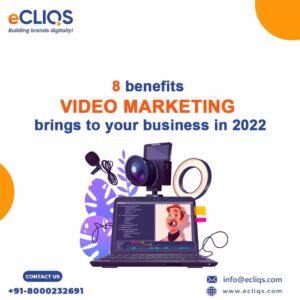
Top 8 Video Marketing Benefits
1. Video Boosts Conversions and Sales
You might potentially make a lot of money using videos. If you include a product video on your landing page, you may expect an 80% increase in conversions(source:saleslion).
If the video’s presenter is convincing enough, they might convince the viewer to become a lead (or a lead to become a customer), rather than just reading the results in the search engine.
It’s possible that playing a video could lead to a purchase. Research conducted by Explain Ninja shows that after watching an explainer-video about a product or service, 74% of viewers went on to make a purchase. Adapt your language to your audience!
2. Your Audience is More Likely to Watch Your Video
Users are more inclined to watch an embedded video. Thus, you will have yet another chance to spread your word.
More frequently than not, you’ll find a video instead of text. Keep in mind who you want to see your marketing video from the beginning.
3. Video Goes Well With Your Email Marketing Campaign
Even if you’re familiar with email marketing, have you ever heard of video email marketing?
There is evidence that including the word “video” in a subject line increases open rates and decreases unsubscribe rates. The remarkable uptick in click-through rate from sending videos via email ranges from 200 to 300 percent(source: Benchmark).
Emails containing videos can be more engaging if they include a compelling CTA and preview image.
Additional ways to tailor your message to a specific viewer include using the person’s first name in the video’s thumbnail and making references to the person’s interests and achievements.
4. Rank Higher in Search
An increase in search engine rankings can be achieved with the use of video. According to a survey conducted by HubSpot, 66% of viewers of branded videos go on to visit the site of the advertiser. This demonstrates how high-quality video content may pique consumer interest and boost site traffic by keeping viewers engaged for longer. Because Google uses clicks and traffic as ranking factors, this is crucial. The more the site’s visibility in SERPs, the greater its share of clicks and traffic.
The advancements in machine learning at Google have allowed the search engine to identify thousands of individual images within a movie. You may organize video content by its keywords using Google’s Video Intelligence API. In terms of search engine optimization, this may be a huge plus.
When it comes to search engine optimization, video also helps because it adapts to multiple screens. Many video hosting sites, including YouTube and Vimeo, optimize their content for mobile devices, allowing you to reach a wider audience.
Google’s ranking system is giving video-heavy webpages a boost. That’s why it’s crucial for companies to incorporate films into their online marketing efforts.
Get the most out of your video marketing campaigns by implementing these search engine optimization strategies for videos.
- Shorter is better when it comes to video length. The most effective length for online videos is under two minutes. Communicating effectively in a short amount of time is essential. A short video of only four minutes will do. However, a major drop in viewership could occur if a video ran too long.
- Take down the dialogue from your video. If you have taken the time to transcribe the audio from your video, you will help the Google crawlers crawl your content more effectively. As a result, more people are likely to find your site through a web search.
- Videos should be optimized. Including titles, descriptions, and meta tags will help search engine spiders better index your movie.
- We can’t stress enough how important high-quality thumbnails are. Click-through rates can be improved by the use of appealing thumbnails to attract the attention of search engine users.
5. Video Builds Trust
Video increases confidence because viewers feel connected to the video’s makers. Your prospect will appreciate the personal touch of a video introduction over a barrage of impersonal emails or phone calls.
Customers can’t buy without quick videos. Recent research by Optinmonster indicates that 90% of mobile video viewers value product videos, leading to a sizable uptick in sales.
Customers will have more faith in you if you provide them with more informative and educational movies. And it gets better; with increased consumer confidence comes a greater likelihood of making sales.
6. Bump Up Social Shares
HubSpot reports that 83% of customers are willing to share your company’s video content with friends and family if it is well received by the intended demographic.
Make entertaining videos that people will want to share on social media. Despite the fact that feelings can’t be quantified, social connections have been shown to increase site visitors and yield even greater results than monetary ones.
7. The Future of Video is Bright
There has been a corresponding increase in our reliance on technological advancements.
This means that you now have more options than ever before for creating video content that will spark your audience’s attention and get them involved with your brand.
To get the most out of your videos, you should give some thought to their potential applications.
Now is a great time to begin creating video content and keeping up with the most recent ways and best practices for disseminating your message to typical internet users, since VR, AR, and streaming services are on the horizon.
8. Reach Decision Makers
Consumers will go out of their way to find videos relating to the goods and services they are interested in. Videos have a greater probability of influencing clients’ purchasing decisions because they educate them and foster a lasting relationship with your target market.
Marketers who used movies shared on social media reported a 90%+ increase in lead conversion rates.
And if both text and video are accessible on the same page on the same topic, 59% of top-level executives say they will watch the video.
Takeaways
Online, on social media, and on mobile devices, video marketing is a potent tool for businesses to connect with customers.
It’s a fantastic medium through which to disseminate data concerning your offering to everyone who could be interested.
After you’ve made your video, you need to get the word out and track its performance so you can tweak and perfect your strategy for future campaigns.
In order to keep their attention, consumers are searching for novel means of interacting with brands online. Offerings that aren’t pleasing to the eye risk being ignored by potential buyers.
Reference
- https://www.videowise.com/blog/the-top-5-benefits-of-video-marketing
- https://www.designrush.com/agency/video-marketing/trends/what-is-video-marketing
- https://www.lumapixel.com/blog/video-marketing-for-business-benefits/
- https://thesocialshepherd.com/blog/video-marketing-benefits
- https://www.dreamgrow.com/8-reasons-why-your-business-should-use-video-marketing/
- https://explain.ninja/blog/20-video-marketing-statistics-2020/
- https://saleslion.io/ecommerce-statistics/using-video-on-landing-pages-can-increase-conversion-by-80/
- https://www.benchmarkemail.com/blog/how-to-increase-your-ctr-by-200-percent-with-video-email/
- https://optinmonster.com/video-marketing-statistics-what-you-must-know/
A Guide to Google’s Performance Max Campaign
With the help of automation and machine intelligence, a new type of Google Ads campaign is here to help your advertising plan succeed. To accomplish these goals without relying on the Google Merchant Centre product feed, the company unveiled Performance Max (PMax) campaigns at Google Marketing Live in 2021.
Since Google said it would expand the Performance Max campaign, many have wondered what it is, how it stacks up against other ads, and how well it actually does. This blog is intended to serve as a resource for marketers by providing information in response to their most pressing queries.
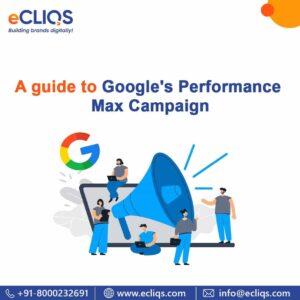
What are Google’s Performance Max campaigns?
Launched for the first time in November of 2021, the Performance Max (or PMax) is a relatively new goal-based campaign type. You may utilise automation and analytics to pinpoint exactly when and where your ads need to appear for a given campaign to achieve its objectives across the full breadth of Google’s ad inventory.
This “one size fits all” campaign type is the latest step by Google to leverage machine learning to gain more control over what your ad looks like, when they will be served, and who they are offered to.
Their fascinating replacement of Smart Shopping advertising is just one example. Smart Shopping emerged in 2018 as an improvement over traditional Shopping campaigns and quickly became a Google recommended practice. This change to PMax should be noted.
Main benefits of Performance Max to plan your campaigns
100% goal-oriented 100% performance: Your marketing plan revolves around your desired outcomes. As the strategy’s focal point, your marketing goals should be front and centre. With the help of AI, you can zero in on the ideal customer for your business and make a lasting impression throughout the whole Google ecosystem, all while staying true to your original goals.
Accelerate results: Google Signals can help you get your campaigns up and running more quickly, allowing you to get better results in less time.
Reporting: A new set of reports will be available on Google Insights, letting you know which of your ads are doing well.
How to setup a Google Ads Performance Max Campaign: Things to Keep in Mind
Now that you know what a Performance Max Campaign is and why it’s employed, we can get into the specifics of how to implement one successfully.
Step 1: Choose Your Goal
The first stage in setting up your campaign is to choose your aim.
Where do you want this campaign to take you? Do you want more leads? Want to increase sales? What, you want even more people to visit your website?
Whatever your aim, ensure you have a clear understanding of what you want to achieve before you go on to the next phase.
Step 2: Choose Your Budget
The next step is to choose your budget.
Do you have a budget in mind for the campaign?
Remember, with a Performance Max Search Campaign, you are likely to notice a higher cost per click, based on your ad scheduling, average daily budget, conversion targets, bidding strategy, machine learning models, campaign type, creative assets, and more factors.
So, you must guarantee that you are willing to invest a bit extra money on your marketing.
Step 3: Choose Your Audience
Selecting your target demographic is the next step.
Who exactly are you hoping to reach with your promotion?
A subset of the population or repeat visitors to your site might be singled out for promotion. Your Google Ads account, previous campaign results, conversion goal guidelines, and other data can all go into making highly targeted Performance Max ads.
Whatever you decide, before you move on to assembling an asset group to house your advertisements, make sure you have a firm grasp on who it is you hope to reach.
Step 4: Choose Your Ad Format
The next thing to do is settle on an advertisement format.
Choose the one that works best for you from among the available alternatives.
You can choose from HTML5, as well as text, images, and videos.
Step 5: Choose Your Keywords
Selecting appropriate keywords is the next stage.
Which specific terms or phrases do you hope to emphasise in your marketing efforts?
Choose keywords that describe your product or service accurately.
Step 6: Set Up Your Campaign
The last thing to do is to initiate the campaign.
Following the acquisition of the aforementioned data, campaign setup can begin.
You’ll need to sign up for a PPC-focused advertising platform to accomplish this.
After signing up, you’ll be able to launch your campaign and begin attracting visitors to your website.
5 Tips to Optimise PMax Campaigns
With Google continuing to automate more and more tasks, there are several factors to consider when working with PMax.
1. Have clear goals
These campaigns are goal-based. Everyone wants to increase sales and revenue, but the algorithm may be optimised if you know how you want the campaigns to fit into the bigger picture of your marketing strategy.
2. Use insights from existing campaigns
Ad scheduling, geo-targeting, bid techniques, and audience indications are all things over which we have some say. You may speed up the algorithm’s learning and better connect with customers by applying what you’ve learnt from previous campaigns as additional barriers.
3. Use all the assets you can
You’ll be providing the AI a better chance of success, the more high-quality assets you can offer it with.
- 5 Headlines
- 5 Long headlines
- 5 Descriptions
- 20 Landscape images
- 20 Square images
- 5 Logos: at least 1 square logo, others are optional
- 5 YouTube videos (not required, min. 10 seconds)
4. Feed optimization
To get the most out of your online advertising budget, fine-tune your feed. As with traditional shopping campaigns, PMax’s targeting will be based on the quality of the product feed.
5. Collect the right data
A reliable data collection system is essential for automation. Feed Google the most accurate information you can find to maximise its effectiveness. You may check that you are doing so in a few different ways.
- Collect data on conversion rates directly from Google using a global site tag.
- Value your conversion actions so you may employ value-based bidding tactics like Target ROAS.
- Putting in place micro conversion steps will provide Google more signals that your users are actively engaged and likely to convert.
- Improved conversions can be set up ahead of time to guarantee correct data collection.
Takeaway
After reading this, you should have a much better idea of whether or not Performance Max Campaigns are the correct campaign type to help you achieve your marketing objectives and goals.
You can put your attention where it really counts by focusing on strategic performance factors like creative optimization, campaign strategy, and insights with this type of automated campaign. The more original resources you give machine learning, the better it will perform.
References
- https://www.adlucent.com/resources/blog/what-are-googles-automated-performance-max-campaigns/
- https://searchengineland.com/performance-max-campaigns-set-up-386684
- https://www.practicalecommerce.com/setting-up-googles-performance-max-campaigns
- https://www.wordstream.com/blog/ws/2022/07/05/performance-max-tips
- https://www.adsmurai.com/en/articles/max-campaigns-google-ads?hs_amp=true
8 Tips for LinkedIn Marketing
B2B marketers can find the greatest pool of qualified prospects on LinkedIn, which has more than 882 million members (source: businessofapps.com). If you aren’t already using the platform, or aren’t using it to its full potential, you should think again. Successful LinkedIn marketing may do wonders for your professional reputation and, in the long run, your company’s bottom line.
Whether you’re trying to promote your business or yourself, you’ll find some helpful hints in this piece. Let’s get started.
What is LinkedIn Marketing?
Marketing on LinkedIn refers to the promotion of a business or brand through the use of the LinkedIn website. The ability to divide potential customers into distinct groups makes it useful as a marketing tool as well. According to omnicore, among LinkedIn’s 87 million young professionals, 11 million are in leadership roles.
It’s a great way for people and businesses to find each other who share common interests. In other words, if you haven’t already begun Marketing on LinkedIn, now is the time to do it.
Why is LinkedIn Marketing important?
Is there a point in even marketing on LinkedIn? It’s possible that this is the very first thing you’re considering. It’s reasonable to be wary about investing time and energy into a system that won’t provide dividends. Therefore, let’s take a quick look at why marketing on LinkedIn is beneficial:
- 45% of marketers say LinkedIn has aided them in expanding their clientele(source:bluecorona).
- Sproutsocial says that the number of leads it generates is 277 percent higher than Facebook’s.
- According to Kinsta, a whopping 80% of all B2B leads originate on LinkedIn.
- Additionally, it is the main source of social traffic for B2B websites, making up almost half of all visits.
- 91% of C-suite executives say LinkedIn is their go-to for business-related news and insights(source:foundationinc).
Just a few of the numerous compelling arguments that can be made for prioritising LinkedIn marketing and enhancing any existing approach.
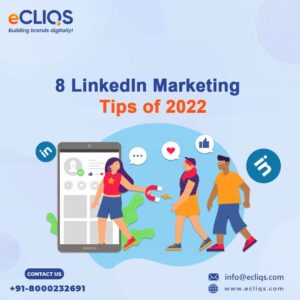
Check out these 8 tips for LinkedIn marketing that will help you grow your business reach in 2022.
1. Optimise your profile
Although this is the first thing that comes to mind, it is often neglected in favour of more complex LinkedIn marketing strategies. Marketing on social media requires optimising your profiles in order to stand out from the crowd, whether you’re using a business page or your own personal account.
Create a professional profile image that represents your brand. According to LinkedIn, with an accompanying photo, you may expect a whopping 21 times as many profile views. Profile pictures for personal profiles should be high-resolution professional headshots, while company pages can include the brand logo. However, this could change based on your specific business and brand.
Including your current job title on your LinkedIn profile can increase the number of connection requests you receive by as much as fivefold. Include at least five pertinent talents; doing so has been shown to increase the number of messages you receive from recruiters and other LinkedIn members by 31 times!
2. Publish content that adds value
LinkedIn marketing is less about making salesy promotional messages and more about making a positive impact on the lives of your target audience. In fact, 88% of the best-performing content marketers are B2B professionals who prioritise the informational demands of their target audience.
Therefore, you should utilise LinkedIn to produce, disseminate, and publish information that serves a purpose, be it to instruct, inform, direct, inspire, or entertain its readers. Because of this, there is a greater possibility that your target audience will interact with your material and develop an affinity for you or your business.
And if they interact with it, it might well show up in the feeds of their connections, too, which is a great way to spread the word and get more eyes on your post.
3. Get your employees involved
The purpose of LinkedIn is to broaden your professional network. Employees are the most trustworthy brand evangelists, thus they can help you significantly increase your visibility and improve your connections on the platform. This means that your staff must actively participate in your LinkedIn marketing plan.
Instruct workers to include your business in their online profiles. This converts them to instant followers and raises your brand’s profile on the site. In addition, your staff will have an easier time participating in corporate updates and spreading the word to their own social networks. They can talk about your company in the media, in articles, or in roundup postings.
You could also urge some of your best workers to join and actively contribute to relevant LinkedIn Groups in order to position themselves as subject-matter experts in their chosen fields. Groups on LinkedIn are special pages where people with similar professional or personal interests may connect with one another.
In light of this data, it may be time to launch a LinkedIn-based employee advocacy programme at your company. Inspire your staff to spread the word by sharing relevant content, showcasing achievements, and spreading the word. When done properly, setting goals and a strategy for employee advocacy can help your company gain a wider audience.
4. Send out personalised InMail
With the same spirit of encouraging staff participation in LinkedIn marketing, you might want to go things further by sending out personalised InMail. Even if you can’t use this function through your company’s LinkedIn page, you can use it to benefit from the knowledge of other employees with a Premium account.
Therefore, whether a salesperson or recruiter is trying to get in touch with potential clients or make connections with key people, sending them an InMail can often do the work. Being more tailored to the individual increases the likelihood of a response. In fact LinkedIn says that the response rate for LinkedIn InMail is three times that of ordinary emails.
Because of this, it is excellent for reaching out to potential customers who are likely to be interested in what you have to offer. Use the recipient’s information to tailor promotions, content, and service updates to their specific interests.
Think of this as a fantastic opportunity to introduce yourself to prominent users of the service and begin forming meaningful relationships with them. To increase the likelihood that they accept your connection request, you might include a personalised InMail with your request.
Additional capabilities, such as in-built analytics, are available to Premium account holders in addition to InMail. This allows them to better understand the efficacy of various message types and optimise their own campaigns accordingly.
5. Run ads using the Matched Audiences feature
Ad targeting based on user interests is another successful LinkedIn marketing tactic. Through your existing account or email contacts, you can retarget people who have visited your website using the Matched Audiences tool.
There is a better probability of converting these individuals because they are already aware of your business or personal brand. Most customers won’t convert on their first interaction with your business, therefore this feature is really helpful for your LinkedIn advertising efforts. However, if you retarget them, you can subtly bring their attention back to you and encourage them to join your cause.
6. Use rich media to create a bigger impact
Even though LinkedIn is a professional network, you shouldn’t limit yourself to just writing status updates. Visual components, like photographs and videos, can help you attract your desired audience on LinkedIn in the same way that they do on other social media platforms.
By increasing engagement with your posts, bespoke photos can increase your reach and effectiveness by a factor of two, says LinkedIn. Plus, video increases your engagement rate by five times, so it should definitely be a component of your LinkedIn marketing approach. The most amazing figure is the 25-fold increase in engagement you can achieve with live video.
If you want your LinkedIn marketing to have the most possible impact, you should think about incorporating rich media content. This is true of both natural and artificial methods.
Don’t be shy about using comics and illustrated stories if they aid in conveying your story’s message.
7. Feed your efforts with analytics data
Last but not least, it’s essential that you complete your homework before diving headfirst into LinkedIn advertising. If you don’t have a plan, you could squander a lot of time and energy publishing hundreds of meaningless pieces. You may get a comprehensive view of your posts’ performance using LinkedIn’s built-in analytics data. If there is room for improvement, you should frequently review your performance statistics.
8. Create showcase pages
A Showcase Page is an expansion of your Company Page that operates in a manner that is quite similar to that of the Company Page. Showcase Pages are meant to draw attention to a certain facet of your company, such as your most popular item, an individual service, or a sub-brand. Users of LinkedIn have the ability to follow your Display Pages in the same manner in which they follow your Business Profile.
Conclusion
With the correct approach, LinkedIn has the potential to become a tremendous engagement hub for businesses as well as independent business owners. You should be able to have a better sense of how to ramp up your LinkedIn marketing efforts by reading the advice that we have provided above.
However, you must keep in mind that the first step is to focus on the appropriate audience. If you are unable to communicate with the appropriate demographic, none of these pointers will have the kind of effect you were hoping for.
References
- https://sproutsocial.com/insights/social-media-statistics/
- https://www.omnicoreagency.com/linkedin-statistics/
- https://iide.co/blog/top-linkedin-marketing-strategies/
- https://www.bluecorona.com/blog/b2b-marketing-statistics/
- https://kinsta.com/blog/linkedin-statistics/
- https://foundationinc.co/lab/b2b-marketing-linkedin-stats/
- https://blog.linkedin.com/2016/05/25/get-comfortable-with-being-uncomfortable-why-now-is-the-time-to
- https://www.socialchamp.io/blog/linkedin-marketing-strategy/
Keyword Research Tips for SEO in 2022
To improve your SEO, you need to conduct keyword research often.
It’s a continuous procedure that may significantly affect your online lead generation and client acquisition efforts.
We guarantee that you will be able to make more informed decisions regarding your digital marketing strategy, tactics, and budget once you start using our keyword research recommendations.
But, how can you maximise the effectiveness of your SEO keyword research?
It’s possible that you’re already familiar with the basics of utilising Google’s Keyword Planner to obtain results for certain search terms. To help you optimise your website for search engines, we’ve compiled some advice from the experts on how to do keyword research.
But before we get into it, let’s quickly go over the fundamentals.
What is Keyword Research?
Through the process of keyword research, you may learn about the themes that consumers are interested in and the specific words you should use on your website and digital content by compiling a list of search terms and phrases that people really use when using search engines.
At its most basic, keyword research entails coming up with a list of the most relevant terms to employ in your content. You may then use keyword research tools like Google’s Keyword Planner, Conductor’s Searchlight, or SEMrush to learn how often people use those keywords and whether there are any alternate terms they might be using.
Although it may seem trivial, conducting thorough keyword research is a vital first step in boosting your website’s traffic and visibility online.
Why is Keyword Research Important?
Understanding how people are utilising search engines to locate your website, content, or items is the primary goal of keyword research. With that knowledge in hand, you’ll be better able to decide how to revamp your current website, what kinds of digital material to produce in the future, and how to produce them.
You may utilise information like the most searched-for keywords to help put your website in front of the people who are most likely to be interested in it. You need to know the keywords people are typing into Google to find your site.
When you conduct keyword analysis, you may see what elements of your site need improvement. It’s quite evident what has to happen with your website’s content if people are using Google to look for chocolate ice cream and your boutique ice cream brand doesn’t have a page dedicated to chocolate ice cream.
In addition, conducting keyword research can provide insight into the tone and style you should adopt for your material. Knowing whether users are searching for “what is X” or “where can I buy X” can help you prioritise what information to include when you’re making a page on X.
Properly optimising your website through keyword research is vital if you want to start using your digital presence to produce consumers, leads, and income for your organisation.
So, to put it plainly, investing in keyword research can benefit your company as it helps your content to:
- get more exposure,
- boost website traffic,
- and increase business.
Having established the necessity of keyword research, we can move on to discussing how to conduct it in a way that yields useful results.
7 Keyword Research Tips To Boost Your SEO
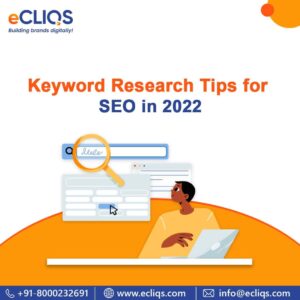
#1. Know your audience
This is a crucial element of keyword research that is often disregarded. Webmasters and advertisers alike need to know their target demographics inside and out in order to select the most effective keywords for their sites.
It is important for marketers to conduct market research in order to better understand their target demographic. The first step in identifying the keywords most likely to bring clients to your site is to have an understanding of the themes that are important to those customers.
#2. Target long tail keyword phrases
Marketers should also select keywords that are highly targeted toward their target audience and niche (also known as “longtail” keyword phrases). In this vein, the word “training” on its own is so broad that it may be used to describe everything from athletic training to dog training.
It’s crucial to be particular in order to optimise content for the appropriate audience. Books on business-to-business sales training are far superior to general sales manuals. Lower levels of competition in search results for longtail phrases also increase the likelihood of higher page ranks in Google.
#3. Use different variations
Many free keyword research tools exist online today to aid marketers in making smart keyword choices. For instance, Ubersuggest is an amazing addition for any SEO content strategy as a terrific keyword recommendation engine. Simply by entering a broad keyword (“sales training”), marketers are presented with a plethora of keyword variants from which to choose (“sales training tips”, “sales training certifications”, etc.).
Online marketing guru Aaron Aders states that the number one criterion for SEO success is to use relevant phrase variations to broaden keyword portfolios.
#4. Identify areas of opportunity
The Google Adwords Keyword Tool is a second excellent free keyword tool. AdWords is Google’s pay-per-click advertising platform, but it may also be a great asset for natural search results. Marketers can analyse search volumes and determine which keywords give the best chances by entering a variety of phrases into the search field.
Marketers can get a sense of how popular specific terms are among competitive websites by looking at the statistics under “Competition” in the AdWords tool.
#5. Let keywords drive the content process
Optimising content after the fact is a common tactic in SEO content strategy (i.e. writing blog posts, then going back to find relevant keywords to plug in). This method also works in reverse.
After compiling a keyword list, marketers can use it to mine for untapped topics for future articles. In this manner, a focus phrase can be incorporated into the creation process from the outset, eliminating the need to waste time searching for appropriate terms later.
#6. Use different keywords to say the same thing
Marcus Sheridan, a well-known expert in content marketing, suggests that there is more than one way to approach SEO for a given goal. Sheridan, while updating the corporate blog for his pool business, decided to write a piece regarding the varying costs of various pool designs. Shortly after, he published an article discussing the cost of equivalent swimming pools.
Sheridan realised that search engines would treat “how much does it cost” and “what is the price” as separate keyword phrases, despite their seeming similarity. He improved the likelihood that clients would find his content via search by optimising it for both mediums.
#7. Leverage traffic analytics
Keyword research for SEO content strategies can really benefit from data analysis provided by technologies like Google Analytics. Marketers can learn what kinds of terms are bringing people to their site through an analysis of traffic patterns, and then create content that caters to those preferences.
Putting it all together
Using these advanced techniques for finding fresh keyword prospects, you can go well beyond the scope of standard keyword research.
Keep in mind that keyword research is only a small part of the whole SEO process.
Numerous other aspects, including keyword placement and site architecture, might have an impact on search engine optimization. You need to take care of everything, or you can just visit e-Cliqs Consulting where a team of experts will do it for you.
References
10 Things you must do for Website Maintenance
You’ve just spent a large portion of your hard-earned money on a new, user-friendly website designed to attract visitors. Whew! You won’t have to bother about website upkeep for at least a few years. Is this what you’re thinking?
If Yes, you’re wrong!
A website is a lot like a vehicle. That well tuned engine will freeze up and become nothing more than a large, costly ornament for your driveway if you don’t do routine oil changes. It’s just as pointless if you don’t take aggressive measures to manage your website regularly.
You don’t want to squander your money, therefore we are going to share with you 10 website maintenance activities that you should do at least once a month.
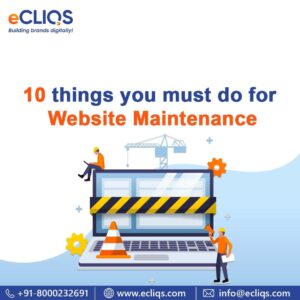
1. Analyse your site’s performance with Google Search Console/Bing Webmaster Tools
Search Console and Bing Webmaster Tools should be best friends since they will alert you to possible issues before they have a chance to wreck your internet marketing plans.
Search engines like Google and Bing may not properly crawl and index your sites if you have an issue with them. Is a nefarious rival attempting to get you punished by pointing a few thousand low-quality links to your site? In other words, did someone break into your site and introduce malware? When issues arise webmasters may get email and dashboard notifications from Google Search Console and Bing Webmaster Tools.
2. Review analytics
With the use of analytics, you can see issues as well as possibilities. An increase in traffic (along with an increase in conversions) may be an indication that your online marketing is working, while a decrease in traffic may be an indication that you have SEO issues. You may learn a lot about a visitor’s needs by following the journey they take to a page with a high bounce rate. Your clients’ interests will be shown by the pages that get the greatest traffic (visits, social shares, links, referrals, etc.).
Because the meaning of the same data might vary greatly from one firm to another, there is no one size fits all solution.
Because Google Analytics is both free and quite effective, We strongly suggest it.
3. Automated backup
If your website is wiped completely, you’re out of luck since most web servers don’t include automatic backups in their normal hosting plans. There will always be a reason to put off backing up your website by hand, so it’s better to have it done automatically. In terms of website upkeep, this is a critical consideration.
You can use different free and paid tools to automatically backup your websites.
4. Update WordPress and plugins
When we bring on a new customer and get into their admin area for the first time, we find a lot of outdated WordPress core and plugins. People seem to believe that making changes to their website only has to be done once but it’s not true. If not weekly, it should be done at the very least monthly due to the constant discovery of new security flaws.
Hackers acquired access to the Panama Papers using a plugin called Revolution Slider that they hadn’t updated, but you’ve already heard about it before. Even if the consequences aren’t as catastrophic as getting hacked, the possibility exists.
Furthermore, there’s no excuse for not performing frequent WordPress core and plugin updates. Everything may be modified with a few mouse clicks in your admin area.
5. Check for broken links
In addition to annoyance for visitors, broken links may have a negative impact on your website’s search engine rankings. Due to the fact that they can’t locate any pages on your site, search engine bots will devalue your site as a whole if this occurs often. If a credible site has a broken link, smart marketers will hunt for it and ask the site owner to connect to their page. As a result, losing key backlinks might be a result of broken links.
You could have:
- Link with a typo
- Moved a page and neglected to check other pages on your site for links to the previous location
- Deleted a plugin that left links in your content or changed a picture with an image that has a different file name disabled
- Provide a link to other websites or pages that are no longer accessible.
6. Multiple devices should be used to see the website.
To ensure that your website displays properly across various devices, do a quick test on the most important pages using many different web browsers, plugins, and script libraries before making any updates. (Desktop, laptop, tablet, and mobile phone.)
7. Check page speed
Your website performance may have been optimised immediately after your previous makeover, but you may have made some changes that have made it slower since then. To make sure it’s still loading swiftly, run it via Google’s PageSpeed Insights.
8. Test checkout process
Because the shopping cart, payment gateway, and any other plugins that are part of this procedure need to be tested on a regular basis for security reasons, it’s critical that you do a test transaction each month to ensure everything works as it should.
9. Test search function
Search functionality has been demonstrated to enhance visitor duration on site, but only if the results are useful. This is best tested by asking someone who is a good match for the target audience to run a few searches.
10. Update contact information
When clients can’t get in touch with you, they’re less likely to believe what you say. All contact information, including phone numbers, addresses, and social media connections, must be updated on a regular basis.
Final words
Keeping an eye on and maintaining your website is much like taking care of any other piece of company equipment. In order to remain relevant, your website has to evolve along with your industry and business. It will operate like a well-oiled machine as a result of these actions. Keeping your website up and running is simple if you stick to a routine and make a must-do list. As long as you put this effort, your website will be functioning at peak efficiency.
References
- https://www.getfeedback.com/resources/ux/7-easy-ways-to-maintain-your-website/
- https://businesscollective.com/your-10-step-guide-to-website-maintenance/index.html
- https://www.siteuptime.com/blog/2018/04/16/6-things-you-can-do-to-keep-website-maintenance-up-to-date/
- https://www.process.st/checklist/website-maintenance-checklist/
How Video marketing can help your business grow in 2022
Video content, if content is king, is the emperor of it all. According to Hubspot, video was the most popular type of content strategy last year, with blogs and infographics lagging far behind in terms of popularity.
It’s difficult to overestimate the influence videos have in today’s world, and your rivals are making the most of it. More than 87% of them make use of video in their marketing efforts (source:wyzowl.com).
The use of video in marketing is nothing new. Commercials on video have been around since the 1940s, when the first one aired during a Yankees game on a New York TV station.
YouTube was launched 65 years later. For $1.65 billion, Google bought YouTube less than a year after realising the power of videos in marketing.
Video marketing may help your business grow in 2022, and we’ll explain how in this post.
But first, lets understand what video marketing is all about?
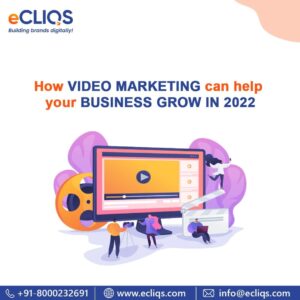
What is Video Marketing?
Using video to advertise your brand, product, or service is known as video marketing. The objective is to reach, attract, and educate your target audience in order to nurture and eventually convert them into customers.
Marketing your business and products using videos is known as video marketing. As a result of video’s speed and simplicity, it may be more popular with viewers than textual information. Having a hectic schedule means that consumers may not have the time to read about new products or services. As a result, providing customers with high-quality video material is the ideal method to better explain your business.
7 Benefits of Video Marketing for your business
1. Higher Conversion Rates
WordStream estimates that including a video on a landing page can boost conversions by as much as 80%. Adding a video to an email can increase its open rate by 200 to 300 percent(Source:Forrester).
On your website and social media pages, viewers expect to see videos. Doing so is extremely likely to attract their attention. In less than two minutes, a video may propel a potential customer along the sales funnel.
2. Better Search Engine Rankings
For the past 15 years, Google has been stressing the value of video content. Your website’s search engine rankings will improve as a result. Videos, on the other hand, can assist you gain a 157% boost in organic traffic from search engines(source:Hubspot).
SEO experts may use videos to their advantage. They don’t immediately affect your website’s search engine rankings, but they offer it a greater chance of increasing them.
- Dwell time — Google considers the amount of time a visitor spends on your website when calculating your page rank. Intense videos deter potential customers from abandoning your website.
- Bounce rate — As a major ranking element, Google considers how long a visitor stays on your page. Videos that pique the interest of your potential customers keep them on your website longer.
3. Improved Customer Connection
Your company’s connection with consumers and the trust of potential customers can both benefit from the use of videos. It’s far simpler for the typical individual to establish eye contact with someone when they can see them talking directly to them.
A video is always better than black text on a white backdrop. The user, on the other hand, finds it more difficult to turn off the video than to turn off the text.
Videos are better at evoking emotions than any other media on the internet. Your voice, music, and facial emotions may all be used in your favour. This promotional tool might assist you in humanising your company’s image.
4. Impressive Brand Awareness
As part of your marketing strategy, videos are a wonderful way to increase brand recognition. Your company story, interviews with employees, and behind-the-scene footage may all be conveyed in a film.
You may do a better job of convincing clients that you share their beliefs by displaying films. A picture is worth a thousand words when it comes to promoting a brand. At the very least, video is worth twice as much.
5. Easier Journey Down the Funnel
YouTube’s popularity cannot be overestimated. If you want to reach your target demographic, you should consider using the platform to make purchases.
Because they give a genuine look at the product and an opportunity to see how it appears and functions in action, video reviews of products are becoming increasingly popular in today’s marketplace.
Making product videos available to customers directly from the website is another way to aid them in their purchasing choice. More than four times as many people would rather watch a video than read about a product according to animoto. Additionally, 20% of buyers may lose interest in the goods if there is no video description.
6. Improved Engagement
A video’s likelihood of being shared on social media is incredibly high. Text and picture sharing are outperformed by social video by a factor of 1200. User engagement is increased by 33% when videos are posted on a Facebook page. According to Mediapost, the open rate of your email may be increased by 13% just by mentioning the word “video.”
Word of mouth marketing is a great way to spread the word about your product or service. Aside from the fact that you’re gaining new customers, you’re also providing them the opportunity to become your brand advocates.
7. Better ROI
Nearly 90 percent of marketers feel video marketing pays off, according to a recent Wyzowl poll. An increase in ROI may have a significant impact on a company’s decision-making process because of the amount of money they spend on marketing.
If you take use of video marketing to its maximum potential, your campaign’s return on investment (ROI) will soar.
Here are some pointers to help you succeed with video marketing.
Be Genuine — Professional video production isn’t necessary for all promotional videos. A more authentic connection is made between the spectator and an amateur video, not the other way around.
Keep It Short — There is no need for a lengthy film to accomplish the task at hand. Longer videos drive viewers away. The vast majority of effective marketing films are no longer than 120 seconds long.
Converse — Direct your voiceover to the intended audience to make the video more engaging. In your communication, use the pronoun “you” to emphasise the importance of your message to them.
Optimise for SEO — All videos must be properly tagged, described, and transcribed for search engine optimization (SEO). Even if videos aren’t the most crucial SEO tool, when properly optimised, they may have a positive impact on the campaign’s results.
Focus on the First 10 Seconds — First 10 seconds of your video are an opportunity to grab the attention of a viewer and keep them engaged. As a result, make every one of them count. This brief time frame should be enough to address your client’s concerns and guarantee a solution.
Use Closed Captions — According to the American Press Institute, an estimated 85 percent of all videos on Facebook are viewed without sound. According to the same studies, many people are unable to focus on other tasks because of the sound. Additionally, closed captions make your films more accessible to those with hearing or vision impairments.
Summing Up
If a company incorporates video into its marketing strategy, it may clearly see a rise in sales. More significantly, video marketing is having a positive impact on both B2B and B2C companies of all sizes.
In other words, video marketing may aid you no matter who your target audience is or what your business’s goals are.
References
- https://invideo.io/blog/video-marketing-tips/
- https://www.bluetonemedia.com/Blog/375030/8-Reasons-Video-Marketing-is-Essential-to-Business-Growth-in-2022
- https://enterpriseleague.com/blog/using-video-marketing-for-small-businesses/
- https://www.openreel.com/benefits-video-marketing-revenue-growth/
- https://www.oberlo.in/blog/complete-guide-video-marketing
- https://blog.hubspot.com/marketing/video-marketing-statistics?__hstc=103568671.c560312daa62d830b5314b959461ff7d.1659419551660.1659419551660.1659590027261.2&__hssc=103568671.1.1659590027261&__hsfp=1623975401
- https://www.wyzowl.com/video-marketing-statistics/
- https://www.americanpressinstitute.org/need-to-know/try-this-at-home/85-percent-facebook-videos-watched-without-sound/
- https://www.wordstream.com/blog/ws/2017/03/08/video-marketing-statistics
- https://www.forrester.com/report/As-Seen-In-The-Inbox/RES54235
- https://animoto.com/blog/business/video-marketing-cheat-sheet-infographic
- https://www.mediapost.com/publications/article/172935/video-boosts-email-opens-up-to-13-improves-conve.html
How to setup Google Ads Campaign in 2022? – A complete guide
If you’re going to spend any money on advertising in order to reach your intended audience, make sure you spend it wisely.
In other words, a location with more than 259 million unique visits and 4.8 billion interactions every day.
Somewhere like Google.
The world’s most popular website, Google.com, was created just two years before Google Ads was introduced. In October 2000, Google Adwords, the company’s advertising platform, was launched. However, in 2018, Google Ads underwent a rebranding process.
You’ve undoubtedly seen (and definitely clicked on) a Google ad due to the company’s extensive reach. and so have the people who might buy your products.
You’ll learn how to get started advertising on Google in this guide. This blog will guide you on how to optimise your ad campaigns using the platform’s specialised capabilities.
We all know that the more effective and targeted your sponsored advertisements are, the more clicks you’ll get and the more likely it is that you’ll get new clients.
Thus, Google Ads has grown in popularity among businesses of all types.
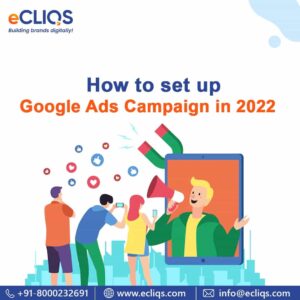
What is Google Ads?
Google Ads is an advertising network that includes the Google search engine, search partners, the Google Display Network, audiences, websites, videos, YouTube channels, and mobile applications, among other components. With Google Ads, businesses may enhance the number of qualified leads and sales they receive by directing relevant visitors to their website.
Google Ads is a great approach to get qualified visitors, or people who are interested in what you have to offer, while they’re looking for such things online. Your website traffic, phone calls, and in-store visits may all be increased with the help of Google Ads.
Using Google Advertising, you can build and distribute well-timed ads to your target audience. When your target clients are searching for items and services like yours using Google Search or Google Maps, your business will appear on the search engine results page (SERP). This strategy ensures that your ad is seen by your target audience at a time when they are most likely to see it.
Please note that advertising campaigns from the platform can also be shown on YouTube, Blogger and the Google Display network.
To assist your business meet all of its sponsored campaign objectives, Google Ads will help you evaluate and optimise your ads over time.
It doesn’t matter how big or little your business is, you can personalise the adverts to fit your budget. Ad expenditure may be paused or stopped at any moment using the Google Ads tool, allowing you to keep under your monthly budget restriction.
Let’s move on to the next crucial issue: Is Google AdWords a worthwhile investment? Let’s take a look at some data to see whether this is the case:
- Nearly 8 percent of those who see Google Ads click on them(source:accuracast).
- Every month, display ads generate 180 million impressions(source:targetriver).
- Google’s sponsored advertising receives 65 percent of the clicks from individuals who are ready to make a purchase(source:valveandmeter).
- 73 percent of buyers make a purchase after seeing an ad for the product on YouTube(source:boostlikes)
Why advertise on Google?
The most popular search engine, Google, receives about 5 billion inquiries every day, according to internetlivestats. Not to mention that Google Ads has been operating for over two decades, giving it considerable experience in sponsored advertising.
People all around the globe rely on Google to get answers to their inquiries, which are provided in the form of both sponsored and unpaid organic results.
For every $1 spent on Google Ads, advertisers get $8 back, according to the search engine giant.
Is there any other justification required? Google Ads are being utilised by your rivals (and they might even be bidding on your branded terms). Even if you’re ranking organically for a search query, your results are being pushed down the page, behind your rivals, because hundreds of thousands of organisations utilise Google Ads to market their company.
In order to sell your product or service using PPC (Pay-Per-Click), Google Ads must be a component of your paid plan — there’s no way around it.
Google Ads Best Practices
Don’t give up on Google advertising if your first few attempts were a failure. There are several reasons why your Google Ads aren’t functioning as well as they should. Let’s take a look at some of the most prevalent Google Ads guidelines.
– Avoid broad keyword terms.
When it comes to keywords, you need to be absolutely perfect, which is why testing and adjusting are essential parts of your plan. For example, if you’re targeting the incorrect audience with your keywords, you’ll get less clicks and spend more money.
Adjust your keywords based on what’s working (i.e. the keywords that are getting the most clicks). Once you’ve tried a few times and tweaked the mix, you’ll likely get it right the next time.
– Don’t run irrelevant ads.
In order to justify your ad expenditure, you need to make sure your ad is relevant to the searcher’s needs. Advertisements must address the pain points of searchers, so make sure your headline and ad wording match the keywords you’re bidding on.
What you’re looking for can be achieved with only a few modifications to the formula. The ability to generate several advertisements for a single campaign is available; take advantage of this capability to do split testing to see which ads perform best. Google’s Responsive Search Ads functionality is much better.
– Improve your Quality Score (QS).
Google uses your Quality Score (QS) to rank your ad. Placements improve as your rank rises. Your ad will be seen by fewer people and have fewer conversion opportunities if your quality score is poor. While Google will provide you with your Quality Score, it is your responsibility to work on it.
– Optimise your ad landing page.
After a consumer clicks on your ad, it’s just as crucial to make sure they have a positive experience.
Once they click on your ad, what does the user see? The inclusion of the same keywords on your landing page is a sign that it is optimised for conversions. Are you able to alleviate the user’s problem or answer their inquiry using this page? The converting process should be smooth for your user.
Google Ads important terms
- Keywords
- AdRank
- Conversion Rate
- Campaign Type
- Ad Extensions
- Click-Through Rate
- Display Network
- Bidding
- PPC
- Quality Score
You may use these phrases to set up, manage, and optimise your Google Ads. PPC in general and Google Ads in particular have a lot in common. If you want to execute a successful ad campaign, you’ll need to know these things.
1. AdRank
Your ad’s position on the search results page is determined by its AdRank score. As the value of your ad increases, so do your rankings, the number of people who see your ad, and the likelihood that they will click it. In order to get your AdRank, multiply your maximum bid by the Quality Score of the ad you’re running.
2. Bidding
You, the advertiser, decide the maximum amount you’re ready to spend for a click on your ad using the Google Ads bidding system. As your offer rises, so does your position on the auction block. There are three ways to place a bid: CPC, CPM, or CPE.
- For each click on your ad, you pay a fee known as CPC, or cost-per-click (CPC).
- When you pay CPM (cost per mille), you pay for one thousand ad impressions, which means your ad will be seen by 1,000 people.
- If someone clicks on your ad and does a certain action, you pay a fee known as CPE, or cost per engagement.
3. Campaign Type
Search, display, or video are the three types of campaigns that you may run on Google Ads before you launch a sponsored campaign.
- When you do a Google search and get back the results, you’ll see what’s known as a “search ad.”
- A display ad is an image-based advertisement that appears on a website that is part of the Google Display Network.
- YouTube’s video adverts last anywhere from six to fifteen seconds.
4. Click-Through Rate (CTR)
Your ad’s CTR (click-through rate) is the percentage of views your ad receives that result in a click. A greater click-through rate (CTR) signifies that the ad is relevant to the user’s search and includes relevant keywords.
5. Conversion Rate (CVR)
CVR is a metric that measures the number of form submissions as a percentage of total page views. In layman’s terms, a high CVR indicates that your landing page delivers on the promise made in your ad.
6. Display Network
Search results pages and websites in Google’s Display Network (GDN) can both show Google advertisements (GDN). GDN is a network of websites that enable Google Advertisements to be placed on their pages; these ads can be text-based or image-based, and they are displayed alongside material related to your keywords. Google Shopping and app campaigns are the most popular solutions for Display Ads.
7. Extensions
Ad Extensions allow you to add more information to your ad without incurring additional costs. Sitelink, Call, Location, Offer, and App are all examples of ad extensions that fit into one of five categories.
8. Keywords
An extensive set of results is returned when a user submits a query into Google’s search area. When a searcher types in a query, they are looking for keywords or phrases that express exactly what they’re looking for. It’s up to you to decide which search terms show up next to your ad in the results. You’ll see ads for companies that target phrases such as “how to remove gum off shoes” and “clean shoes” if you search for that term.
It is possible to create a list of keywords that you do not want to appear in the search engine results for. If you bid on these terms, Google will remove you from the auction. In most cases, these keywords are connected to your desired search phrases, but they’re outside of the scope of what you’re offering or attempting to rank for.
9. PPC
A sort of advertising known as pay per click (PPC) is when the advertiser pays for each click on an ad. The most frequent sort of sponsored campaign is PPC, which is not particular to Google Ads. To get the most of your first Google Ads campaign, it’s critical that you learn everything there is to know about PPC advertising.
10. Quality Score (QS)
CTR, keyword relevancy, landing page quality, and your historical performance on the SERP are all factors in determining your Quality Score. AdRank takes QS into account.
How does Google Ads work?
Google Ads places your ad in front of people who may be interested in what you have to offer. Depending on the sort of ad campaign chosen, advertisers bid on search terms or keywords and the winners of those bids are displayed at the top of search results pages, YouTube videos, or relevant websites.
There are a number of things that might affect your ability to develop high-performing Google Ads. We’ll go over them in more detail below.
AdRank and Quality Score
An ad’s placement is based on its AdRank and Quality Score is one of the two elements that influence your AdRank. For example, your Quality Score is based on your ad’s CTR (click-through rate), which is how many people see it when it appears in their search results. Your ad’s CTR is mostly determined by how well it fits the searcher’s purpose, which may be determined in three ways:
- Your keywords’ relevancy
- As long as your ad content and CTA are in sync with the searcher’s expectations, you’re doing a good job
- Your landing page’s user experience
Even before you increase your bid amount, you should spend most of your emphasis on your Quality Score (QS). The lesser your acquisition expenses will be and the better your placement will be if you have a higher Quality Score (QS).
Location
Choosing a specific region in which your Google Ad will be shown is an important initial step in creating your ad. Ideally, your storefront should be within a reasonable driving distance of your business. If you run an ecommerce business and sell actual goods, you should configure your location to the locations from where you send your shipments. The sky’s the limit if you offer a service or product that is available to anybody in the globe.
Placement is affected by your current location. You can’t get your yoga studio in San Francisco to show up in New York, no matter how high your AdRank is. This is because Google’s primary goal is to provide users with the best relevant results, even if you pay for them.
Keywords
The importance of keyword research for both paid and organic search advertisements cannot be overstated. You want your keywords to be as relevant as possible to what people are looking for. That’s because Google uses your keywords to match your ad to relevant search searches.
Google will show your ad based on the keywords you pick for each ad group within your campaign (ideally one to five keywords).
Ad Extensions
Ad Extensions are a no-brainer if you’re running Google Ads because they’re free and provide users with more information and an incentive to interact with your ad. They fit into one of the following categories:
- Sitelink Extensions extend your ad — increasing the number of clicks on your site by making you more visible and adding extra links.
- With Call Extensions in your ad campaign, you’ll have an extra (and quick) option for customers to contact you. Include your phone number if you have a customer care staff ready to interact and convert your audience.
- Location Extensions allow Google to show searchers a map and your phone number in your ad so they can quickly locate you. It’s a terrific choice for brick-and-mortar companies, and it’s perfect for searches like “…near me.”
- If you’re currently running a promotion, then Offer Extensions are a good idea. It can encourage people to click on your ad above others if they find that your selections are cheaper than those of your rivals.
- Mobile users can access an app’s download page via an app extension. This eliminates the need to conduct a fresh search in order to locate and download the software from an AppStore.
Google Ads Retargeting
Users who have previously engaged with your website but have not yet converted can be targeted using retargeting (or remarketing) in Google Ads. Tracking cookies can be used to advertise to specific people while they browse the web. In order for prospects to become customers, they need to see your marketing material a minimum of seven times.
Types of Google Ads Campaigns
- Search
- Display
- Shopping
- Video
- App
On Google Ads, you may choose from one of five campaign kinds. In this section, we’ll go through the most effective applications for both and explain why you would prefer one over the other.
1. Search Ad Campaigns
Text adverts that appear on Google search results pages are known as search ads.
One of the advantages of using search advertisements is that your ad will be displayed where the majority of people begin their search for information: on Google. Users are used to viewing and clicking on results since Google displays your ad in a similar fashion to other results (except that it is labelled as “Ad”).
Responsive Search Ads
You may input up to a total of 15 headlines and ad content variants in responsive search ads, and Google will choose the most effective ones to show to viewers. You may use the same headline and description for all of your conventional advertising.
To acquire the most clicks from your target audience, you may use responsive advertisements, which allow you to create an ad that is dynamically tested until you find the optimum version for your demographic.
2. Display Ad Campaigns
The Google Display Network is a collection of websites across a wide range of businesses and demographics that have agreed to allow Google Ads to be shown on their pages. Paying per click or impression on adverts benefits the website owner. Advertisers profit from the ability to target specific audiences with their content.
3. Video Ad Campaigns
It is common for YouTube videos to be accompanied with video advertisements. Consider YouTube to be an extension of your browser. To get a user’s attention, you need the correct keywords to put them in front of a video.
4. App Ad Campaigns
With Google App Campaigns, you can advertise your mobile application across a variety of Google properties, including the Google Search Network, YouTube, Google Play, and the Google Display Network, to name a few. Using advertising, you may persuade your target audience to either download your app or, if they already have it, to do a certain action inside it.
You don’t create an App ad campaign as you do with other ad kinds. Instead, submit your app’s details and target audience to Google, and then bid on it. For the rest, Google performs the heavy lifting for you.
5. Shopping Ad Campaigns
Shopping campaigns, like other forms of advertising, appear on search engine results pages and feature information about the product, such as the price and images of the goods. Using Google Merchant Centre, you can set up a Shopping campaign and provide Google with particular product information for use in the creation of your shopping advertising.
With Shopping Ads, you may focus on a single product or series of items rather than promoting your whole business. As a result, if you conduct a Google search for a certain product, you will see advertisements for several manufacturers appear at the top and/or side of the page.
How to Use and Create Google Ads
Setting up Google ads is a breeze (and quick), thanks to the platform’s step-by-step instructions and handy tips. Starting a Google Ads campaign is as simple as clicking “Start Now” on the Google Ads website. The setup process should take no more than 10 minutes if you already have your ad wording and/or photos ready.
In order to get the most out of your ad campaigns, there are a number of additional steps you must do to ensure they are properly set up and trackable. Let’s take care of this together. Once your advertisements have been submitted for evaluation, follow these procedures.
1. Link Google Analytics.
As a business owner, you probably already have Google Analytics installed on your website so that you can monitor traffic, sales, and other information. Google Ads must be linked to your Analytics account as well. It will be much simpler to keep track of, analyse, and report on these occurrences if you link these accounts so that you can see everything in one location.
2. Add UTM codes.
Tracking activity linked with a link is done by Google using Urchin Tracking Module (UTM) codes. The section of a URL following a question mark (“?”) is one you’ve probably encountered before. The most effective portions of your campaign may be tracked using UTM codes, which show you which offers or advertisements resulted in a conversion. Because you can see exactly what’s working using UTM codes, optimising your Google Ads becomes much simpler.
Instead of doing this for each ad URL individually, you should include your UTM codes when setting up your Google Ads campaign. Google’s UTM builder can be used to manually add them if you choose.
3. Set up conversion tracking.
Your ad campaigns’ conversion monitoring informs you just how many clients or leads you’ve gotten from them. You don’t have to set it up, but if you don’t, you’ll have to make educated guesses about your advertising’ return on investment. An app install or phone call from an ad can be tracked through the use of conversion tracking.
4. Integrate your Google Ads with your CRM.
Having all of your data in one location makes it easier to manage, analyse, and report on. You’re already keeping track of contacts and leads in your CRM. Using Google Ads and your CRM, you can see which ad campaigns are most effective at reaching your target demographic, allowing you to target them with more relevant offers in the future.
Google Ads Bidding Strategies
It’s time to start bidding once you’ve set up your ad campaigns and put tracking in place. Remember that how much you bid in Google Ads affects your position in the search results. Even though your budget and goals will dictate how much you may bid, there are a few things to keep in mind while putting up your sponsored campaign.
Automated vs. Manual Bidding
In order to bid on your keywords, you have two options: — automated and manual. Here’s how they work:
- Google’s Automated Bidding feature allows it to alter your bid in response to the competition. As long as your budget is reasonable, Google will do everything it can to help you outperform your competition.
- Manual Bidding allows you to set your own bids for your ad groups and keywords, allowing you to save money on advertisements that aren’t doing as well as you would like.
Bidding on Branded Search Terms
The terms that include your company or unique product name are referred to as branded terms. There’s a lot of discussion about whether or not you should use your brand phrases in your bids. On the other hand, bidding on phrases that are likely to bring in organic results might be viewed as a waste of money by certain people.
While bidding on these phrases provides your website a higher ranking in search results, it can also assist to convert more advanced customers.
If you don’t bid on your branded terms, your rivals will, and you will lose out on precious real estate that is rightfully yours.
Cost Per Acquisition (CPA)
A CPA (Cost Per Acquisition) is a better option if you don’t like the concept of spending money to get people to sign up for your email list. This bidding approach may cost more, but you only pay when you get a paying customer, so it’s worth it. This approach makes it simple to keep track of and defend your advertising expenditures.
Start Your Google Ad Campaign NOW
Google Ads should be a component of your sponsored campaign because of its reach and authority. Use the advice we’ve given you to get started, and don’t forget to keep tweaking and improving as you go.
Only campaigns that require a little more work are considered failures in the world of Google Ads. A successful Google Ad campaign may be created using the approach and information supplied above, so long as you follow the steps outlined.
References
- https://support.google.com/google-ads/answer/6146252?hl=en
- https://evenbound.com/blog/how-to-use-google-ads-a-complete-guide
- https://ads.google.com/home/resources/how-to-setup-googleads-a-checklist/
- https://surfsideppc.com/google-ads/
- https://neilpatel.com/what-is-google-adwords/
- https://valveandmeter.com/pay-per-click-statistics/
- https://www.internetlivestats.com/google-search-statistics/
- https://www.targetriver.com/the-ultimate-guide-to-google-ads#:~:text=Display%20ads%20yield%20180%20million,seen%20on%20a%20YouTube%20ad.
- https://www.accuracast.com/articles/advertising/adwords-clickthrough/


